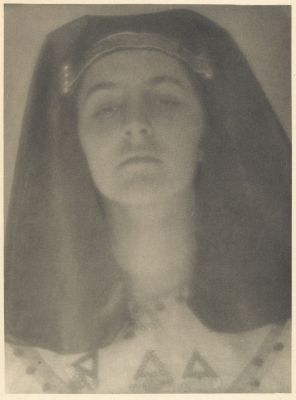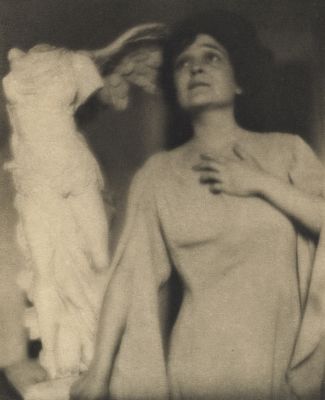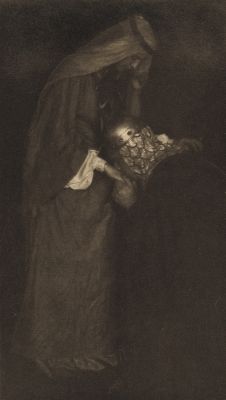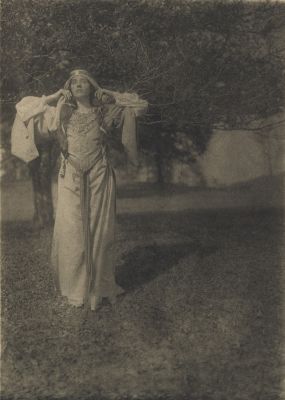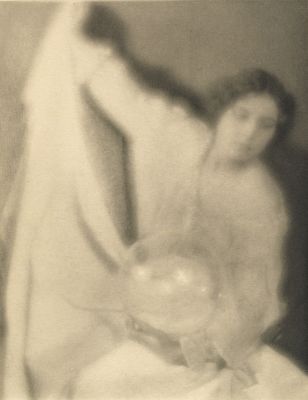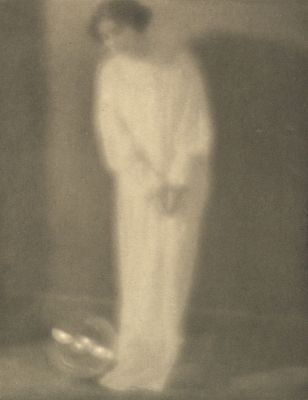
Title
IrisArtist
French, Herbert (American, 1872-1942)Publication
Camera Work XXVIIDate
1909Process
PhotogravureAtelier
Manhattan Photogravure Company, NYImage Size
23.5 x 15 cm
Herbert French began exhibiting creative photographs around 1900, the year his work was accepted at the prestigious Philadelphia Photographic Salon, judged by Alfred Stieglitz and other top pictorialists. French became known for his images of women in exotic costume (often illustrating his favorite poems), printed on platinum paper in low and subtle tonalities.
French was an early member of Stieglitz’s elite Photo-Secession group and was designated a fellow in 1904. Stieglitz included French’s work in Photo-Secession shows at the Pittsburgh’s Carnegie Institute in 1904, Philadelphia’s Pennsylvania Academy of Fine Arts in 1906, and New York’s National Arts Club in 1909. It was also seen at the Little Galleries of the Photo-Secession, in the group’s first three members’ shows, 1905-1907, and, more importantly, in a one-person exhibition there in early 1906, comprising forty-five illustrations to Alfred Lord Tennyson’s Idylls of the King. That same year, French arranged the exhibition Photographic Art for the Cincinnati Art Museum, which comprised almost exclusively work by Secession members. And, the July 1909 issue of Camera Work featured five photogravures by French, along with an article by him on creativity and achievement.
Outside of the context of the Photo-Secession, French’s work was also seen, in other exhibitions and the photographic press. It was included in the Pittsburgh salon in 1900, the annual exhibition of London’s Royal Photographic Society in 1900 and 1901, the London salon in 1902-1904, the Paris salon in 1904 and 1906, and shows in Dresden and Vienna. Perhaps his last appearance was in An International Exhibition of Pictorial Photography, organized by Clarence H. White in 1914 for the Erich Art Galleries in New York.
Herbert G. French died in Cincinnati on June 25, 1942. By this time, he had personally collected over 800 etchings and woodcuts, from the fifteenth to twentieth century, including outstanding impressions by Dürer, Rembrandt, Whistler, and Toulouse Lautrec. French bequeathed these to the Cincinnati Art Museum, forming the nucleus of its holdings of graphic art. [1]
References
[1] Christian A. Peterson
